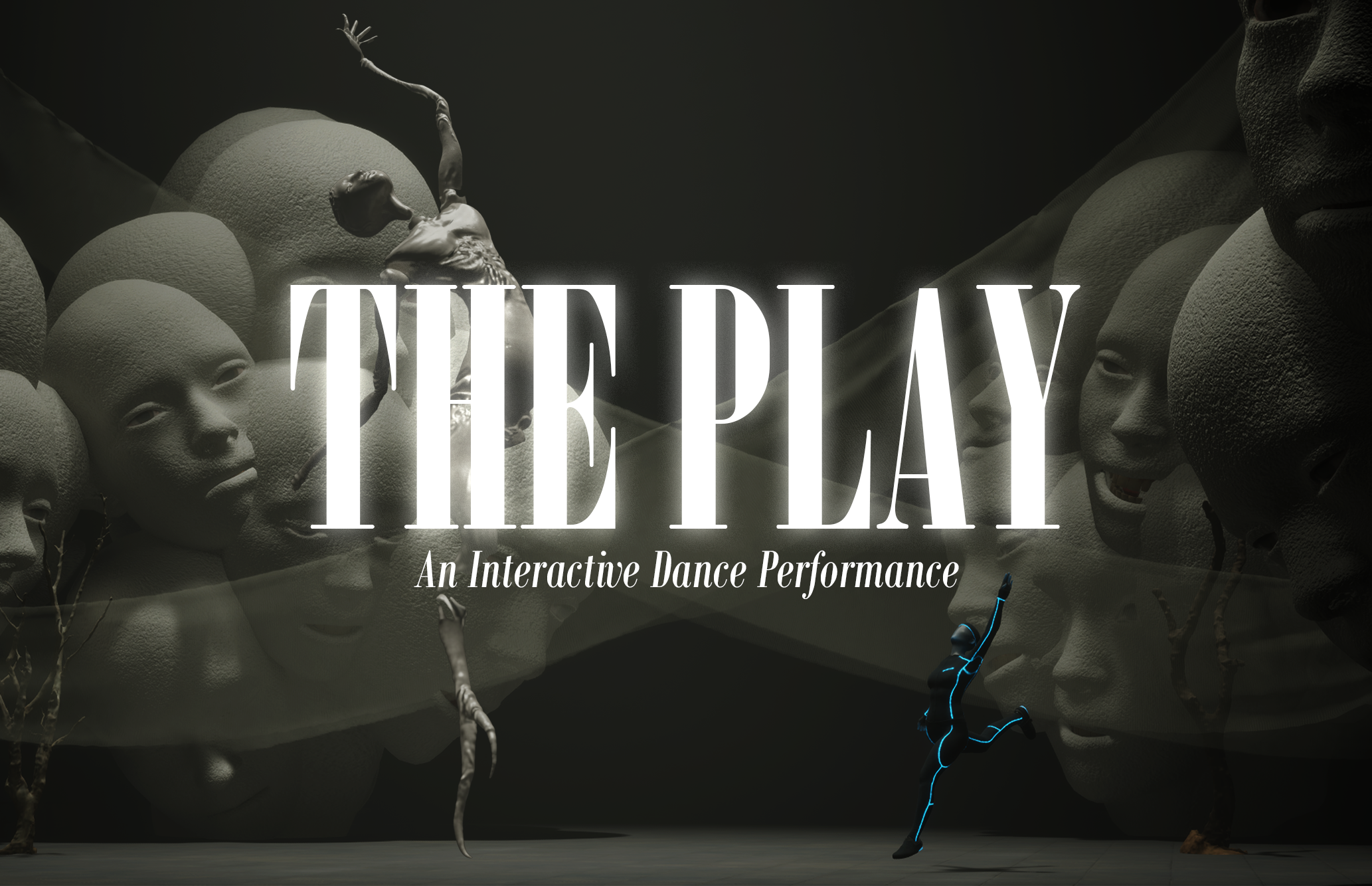The Play
Junqi Luo
Advisor: Luisa Pereira
The Play is a live interactive system where dance, technology, and audience control collide to reveal how our identities are shaped, distorted, and sometimes broken by the gaze and expectations of others.

Project Description
The Play is an interactive performance system that explores the real-time relationship between audience, performer, and director. Blending live dance, digital avatars, and game-engine-driven interaction, the piece follows a central character who splits into two: the pure, internal Child and the socially shaped Self. As the audience responds and interacts through game controllers, the Self transforms—becoming increasingly reactive, fragmented, and estranged from the Child.
Each chapter reflects a stage in the evolution of identity under social pressure, from curiosity and connection to distortion and collapse. The narrative is shaped live, integrating motion capture, projection, and player input to question how much of the Self is formed through external gaze.
More than a performance, The Play functions as a dynamic system that asks: can we remain ourselves in the presence of others, or are we endlessly rewritten by their expectations?
Technical Details
This project uses motion capture to track the dancer’s movements in real time. It also uses a game engine to control a digital character on screen. The audience holds controllers that can change what happens in the show. A wearable webcam streams live video between computers and into the game engine. The game visuals are then projected onto the wall using projection mapping.
Research/Context
This piece grows from my personal contemplation about identity: Are we shaped entirely by others' feedback? I often find myself overthinking and overinterpreting people's reactions, and it made me wonder—does a purer version of myself exist beneath all that? If it does, what is it like? And if we never socialize, do we even exist as individuals?
At the same time, the project comes from my ongoing research into technology. Traditional theater rarely uses technologies common in film and gaming, like motion capture and real-time game engines. Traditional performances are also usually non-interactive. I wanted to explore what’s possible when these tools are brought together. Beyond creating just an interactive dance piece, I aim to build a performative system that explores the real-time relationship between the audience, the performer, and the director.